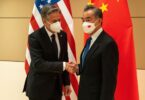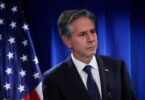Business community was expecting a significant cut in the interest rate to stimulate new investment in productive activates. But the central bank has reduced policy rate by 75 basis points, lowering the interest rate from 13.25 percent to 12.5 percent. They were demanding a reduction of 200 basis points, which will help facilitate fresh investment. It merits mention that rate of interest was less than 6 percent during 2013-18 but it did not help boost interment and expansion in the productive capacity of the economy. The lower interest rate had depressed national savings-GDP ratio from 12 percent to 9 percent.
The Pakistan Business Council consisting of 81 leading industries have expressed disappointment over maintaining tight monetary policy by the central bank as in their view the small reduction in interest will not lubricate the wheels of the economy because the cost of borrowing will remain high. It will not help arrest the decline in the manufacturing sector. Further slowdown of the production lines in the manufacturing sector will lead to steep fall in profits; accentuate downward swing of tax revenue collection and create more unemployment.
Federal government has approved a strategy paper which envisages the levy of additional taxes of Rs. 1 trillion in the budget of next fiscal year and predicts depressed economic growth rate. Keeping in view the failure of previous governments and the present one as well to broaden the tax base by way of direct taxes, the baggage of additional taxation will be tilted more toward indirect taxes. Given the inelastic nature of regressive taxation regime it will not be possible for the tax collectors to achieve the over ambitious target of additional tax collection. During the first half of current fiscal year tax collection target has been missed by Rs.280 billion and the shortfall may reach to Rs.600 billion at the end of the year.
The central bank has supplemented the incentive of small reduction in interest by earmarking Rs.100 billion concessionary loans for the manufacturing sector. It remains to be seen as to whether the adhoc refinancing facility at the maximum end user rate of 7 percent serves as stimulus to new investment or not.






